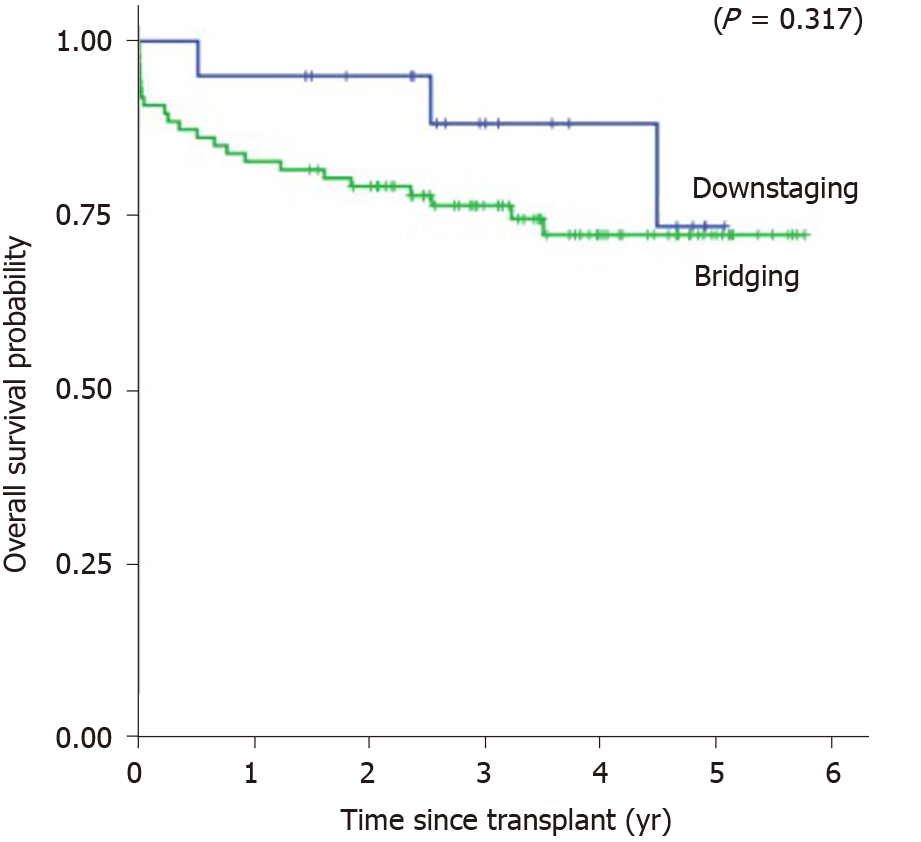Copyright
©The Author(s) 2019.
World J Gastroenterol. Oct 7, 2019; 25(37): 5687-5701
Published online Oct 7, 2019. doi: 10.3748/wjg.v25.i37.5687
Published online Oct 7, 2019. doi: 10.3748/wjg.v25.i37.5687
Figure 1 Flowchart describing the outcome of the 200 patients enrolled in the study.
Figure 2 Receiver operating characteristic curve analysis revealed that in the downstaging group, patients with maximal tumor diameter up to 7.
05 cm are more likely to receive orthotopic liver transplant during drug-eluting bead trans-arterial chemoembolization (P = 0.005).
Figure 3 Kaplan-Meier’s overall survival probabilities of the downstaging group and the bridging group.
Time zero represents the orthotopic liver transplant date. The difference in overall survival was not statistically significant (P = 0.317).
Figure 4 Kaplan-Meier’s recurrence-free survival probabilities of the downstaging group and the bridging group.
Time zero represents the orthotopic liver transplant date. The difference in recurrence-free survival was not statistically significant (P = 0.935).
- Citation: Affonso BB, Galastri FL, da Motta Leal Filho JM, Nasser F, Falsarella PM, Cavalcante RN, de Almeida MD, Felga GEG, Valle LGM, Wolosker N. Long-term outcomes of hepatocellular carcinoma that underwent chemoembolization for bridging or downstaging. World J Gastroenterol 2019; 25(37): 5687-5701
- URL: https://www.wjgnet.com/1007-9327/full/v25/i37/5687.htm
- DOI: https://dx.doi.org/10.3748/wjg.v25.i37.5687












